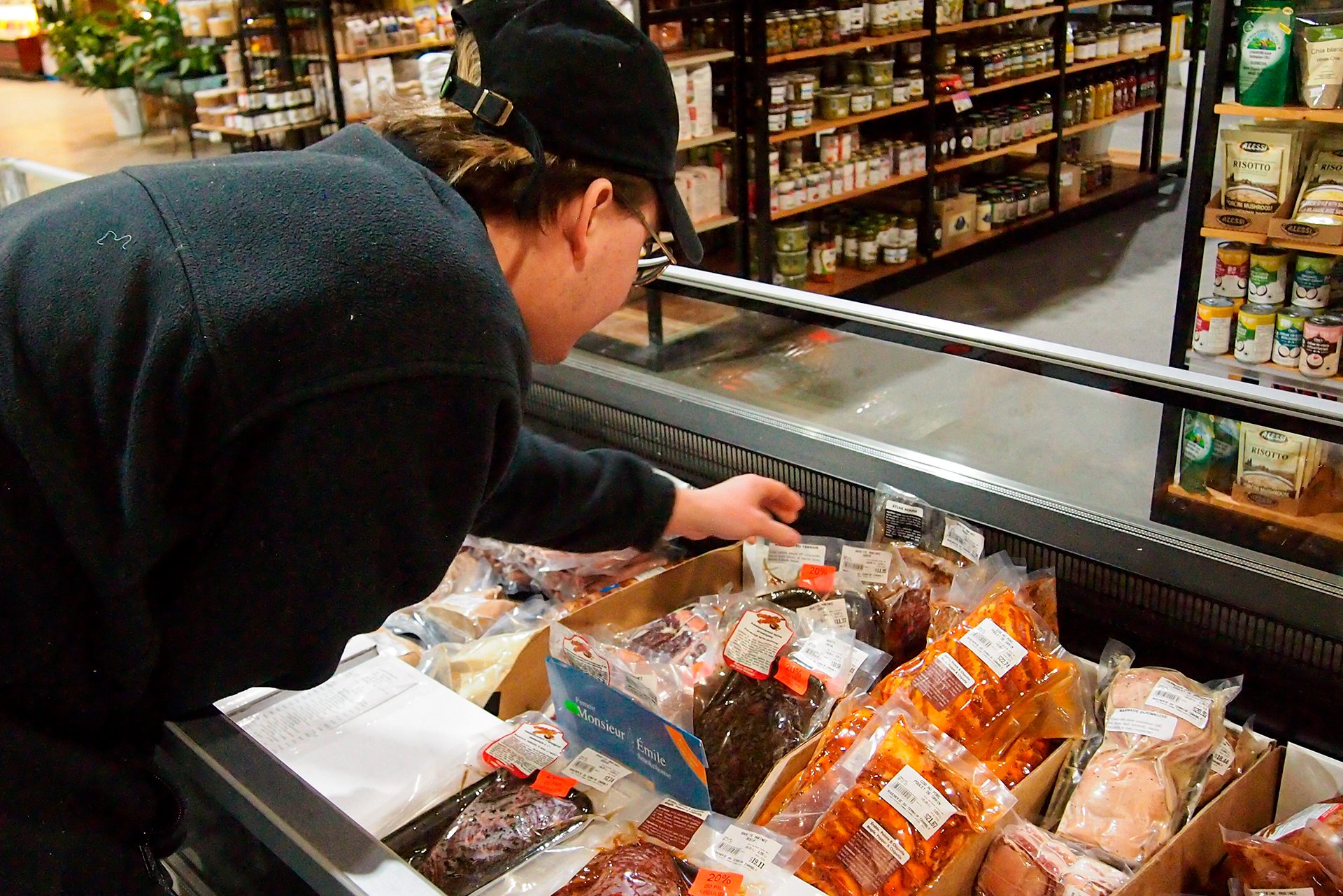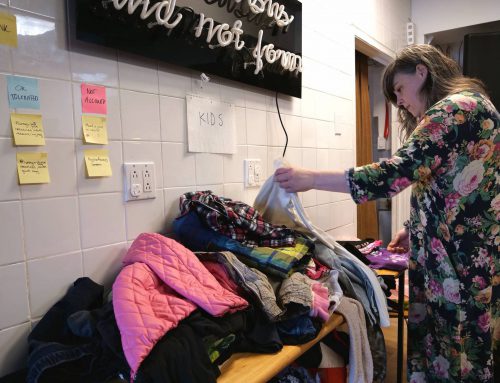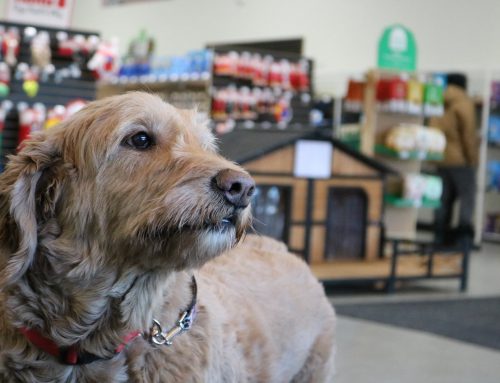BY Justine Gilbert & Alexa Toguri-Laurin
Charles Bernard is a 24-year-old bricklayer living in Montreal. Like many others, he tries to encourage local food producers by buying fruits, vegetables, dairy and more from local greenhouses and farms. On his days off, he likes to go on the Plateau Mont-Royal or on the south shore of Montreal to buy locally grown meat, fresh vegetables and his favorite beers.
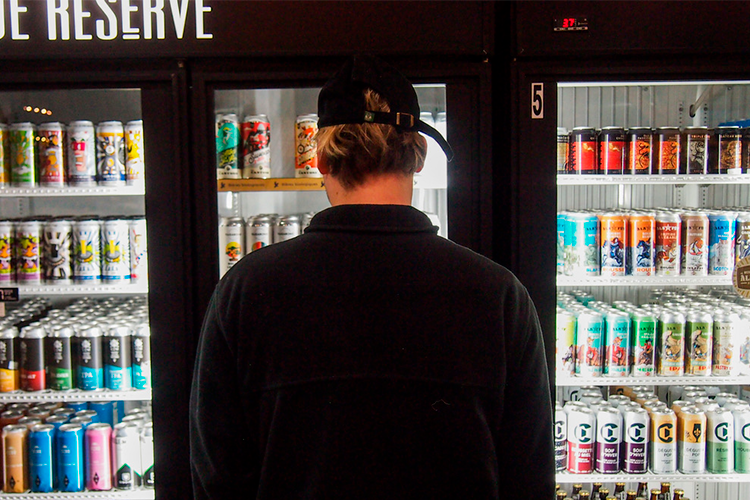
Charles Bernard looking for a locally made beer. Photo by Justine Gilbert.
He says that buying locally grown and produced food not only helps the local economy, but also promotes sustainability.
“I always loved going to farms and eating fresh food made by local producers,” says Bernard. “Growing up in Saint-Jean-sur-Richelieu, I had the chance to try some of the best local produce and really notice the difference between locally grown and store-bought fruits and vegetables.”
For him, buying local means empowering local producers and giving them a chance to expand.
“Local businesses or farms need recognition to succeed. Everyone should take time to learn about the economical and health benefits from eating food grown locally,” says Bernard while passing by the beer section at Ferme Guyon located in Chambly.
The growing popularity of local greenhouses and farms in Quebec brings new challenges. Farmers and food producers are now aiming to surpass the 50 per cent self-sufficiency rate for greenhouses-grown fruits and vegetables all year-round as well as developing new alternatives to give Quebecers access to fresh local food that’s sustainable. That’s the goal of a lot of farms and greenhouses located all over Quebec, who try to grow the local market and invite people to eat more locally and more sustainably.
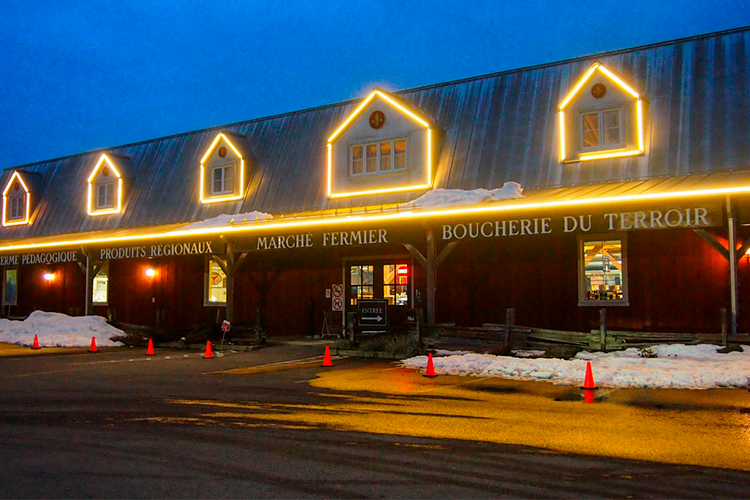
Outside view of Ferme Guyon during the late evening. Photo by Justine Gilbert.
Ferme Guyon is a local farm market that fights to elevate the sustainability of the food grown in Quebec’s greenhouses and farms. They mostly sell products made in Quebec and are proud to be working with farmers from here.
Located on the south shore of Montreal, this farm offers a wide selection of local meats, cheese, fruits and vegetables and more. They also offer plenty of educational activities such as an animal farm and a butterfly greenhouse.
“Everything we have is made in Quebec.” says Sébastien Cliché, the director of the client’s experience. “The more people will think to buy local, the more the positive impact it’s going to have on local producers and our economy.”
One of the primary focuses is developing their produce in a sustainable and eco-friendly manner.
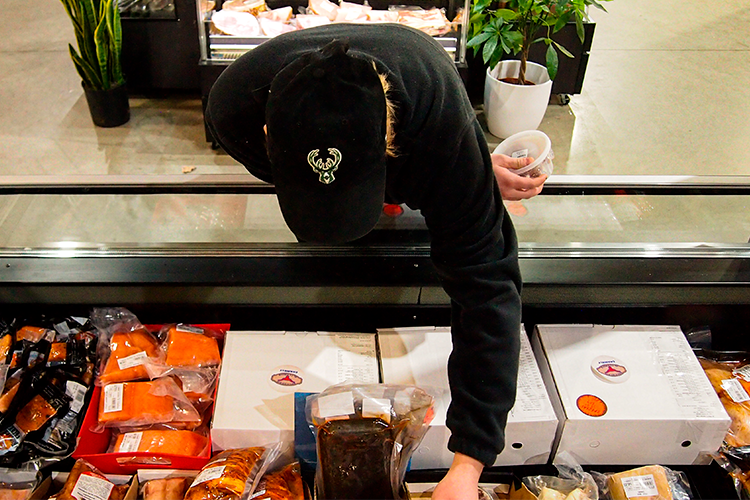
Charles Bernard picking up some frozen meat for his dinner. Photo by Justine Gilbert.
“We choose to stay away from any pesticides. Instead, we opt to use the help of a dozen birds of prey to get rid of any pests like mice, squirrels, worms, and other animals that could damage our food and plants,” says Cliché, pointing at the greenhouses.
Ferme Guyon also wants to educate people by giving workshops about where our food comes from and what are the non-sustainable farming practices they use to grow their food and herbs.
“Our educational farm helps bring knowledge to the new generation,” says Cliché, pointing at the outside farm. “To educate people about where your food comes from and how it’s made really has an impact because it then leads to positive results for local producers.”
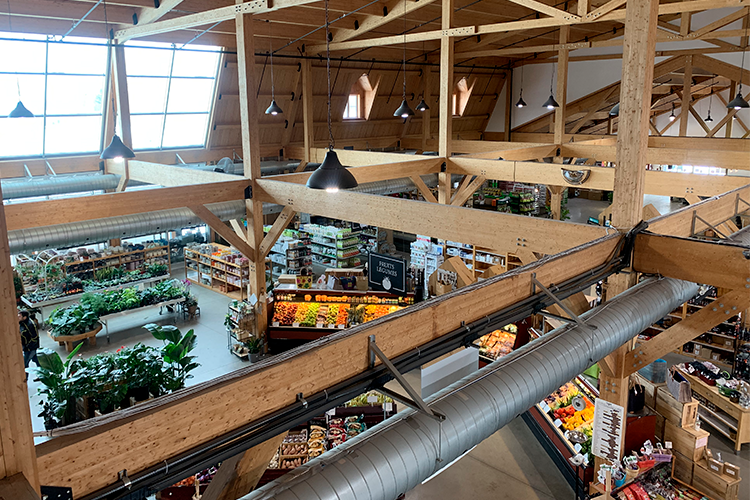
The overview of inside Ferme Guyon during the day. Photo by Justine Gilbert.
Sylvain Charlebois is a scientific director of the Agri-Food Analytics Lab at Dalhousie University. His study field is focused on understanding the future of food systems in Canada.
His current research in the broad area of food distribution, security and safety makes him an expert in the agricultural field and a good source in regards to the benefits of greenhouses in our society.
“The indoor agriculture industry has the potential to feed people more reliably and maybe more sustainably by using greenhouses and farms to grow food even in the winter, in remote communities, urban centers and everywhere in between,” says Charlebois.
He adds that while sustainable greenhouses are rising to success, they also have their fair share of challenges.
“The biggest challenge with greenhouse growing is controlling the humidity, which increases very quickly due to the stored heat,” says Charlebois. “Pests and diseases would be the second most important challenge when it comes to growing produce in greenhouses and farms.”
As inflation rises many families rely on food banks. To provide healthier food options, food banks are working with local producers to make food accessible. Video by Alexa Toguri-Laurin.
Lufa Farms is an urban agriculture company with four greenhouses based in Montreal. Their main goal has always been to give people access to fresh locally grown food in urban areas.
“Lufa Farms started because Mo and Lauren wanted to really make good food that people could enjoy,” says Lufa Farms public relations coordinator Callie Giaccone. “Greenhouses are a good way to cut transportation costs, to control the supply chain, and build the local economy. There’s just so many benefits to building your local economy and supporting folks that are trying to make food for our communities.”
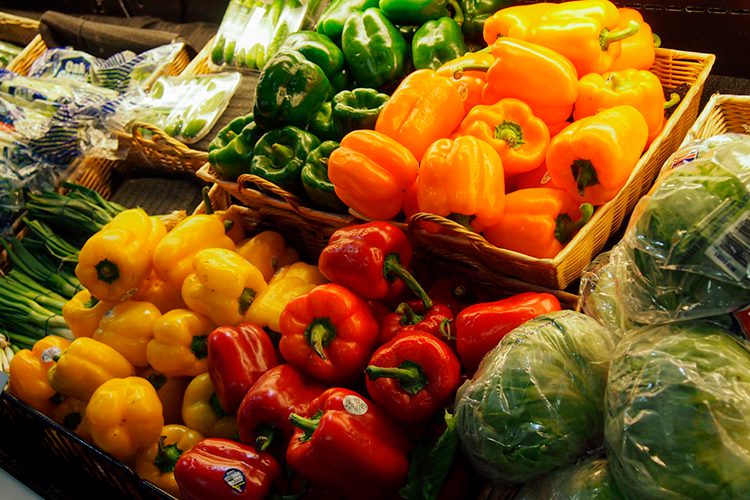
Fresh locally grown vegetables at Ferme Guyon. Photo by Justine Gilbert.
What differentiates them from other self-sufficient greenhouses is that they are located on industrial buildings rooftops. Therefore, they need to innovate themselves to stay eco-friendly.
“Our greenhouses are hydroponic, meaning that our vegetables grow in cocoa fibers. By doing that practice, we don’t use soil and can recirculate our water so we’re all about sustainability,” says Giaconne.
To maintain their self-sufficiency rate, Lufa founded an online food market that promotes their rooftop-grown veggies but also helps bring responsible agriculture to communities’ tables by giving local farmers the opportunity to sell their produce on Lufa’s online farm website.
“Lufa also has a bunch of partners and over two thousand products from local companies around Montreal.” says Giaccone. “We’re basically an online marketplace based on local suppliers and ingredients.”
This 50 per cent self-sufficiency rate for greenhouses-grown fruits and vegetables not only targets greenhouses and farms but also small food businesses who are aiming to follow the trend of using local ingredients to encourage local producers and promote locally made food.
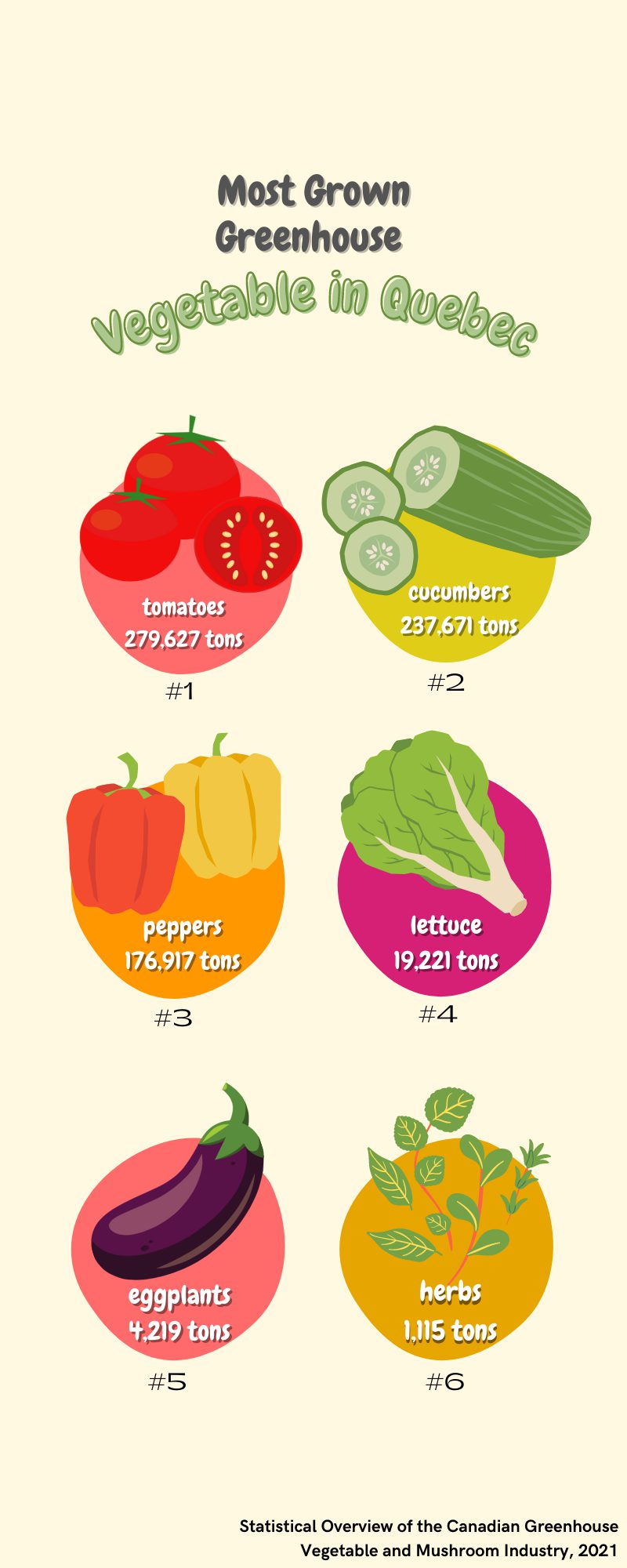
Most Grown Greenhouse vegetable in Quebec. Poster by Justine Gilbert.
Boulangerie et Gourmandises de Pascal Montigny in Sainte-Julie is an example of how bakeries use locally grown products to make pastries.
“I chose to step away from any bad conservative sugar and instead chose to work with high-end local chocolate,” says Pascal, sipping on his espresso. “I work with a local wheat producer located in Charlevoix that has unmodified wheat and that works with an ancient mill to get the best flour possible.”
He adds that buying local is a good way to promote sustainable producers as well as small food owners who use the local ingredients.
“I have hopes that this summer, Quebec’s local food supply chain will rise up from more than the current self-sufficient rate at 50% with the help of the greenhouse cultivation industry and the thousands of farmers who are passionate about giving a sustainable choice to our society,” says Charlebois.
“The fresh berries are always a hit during summer, so I’m not worried about the success of farms and greenhouses for the next few months and potentially for the next winter.” also says Cliché.
